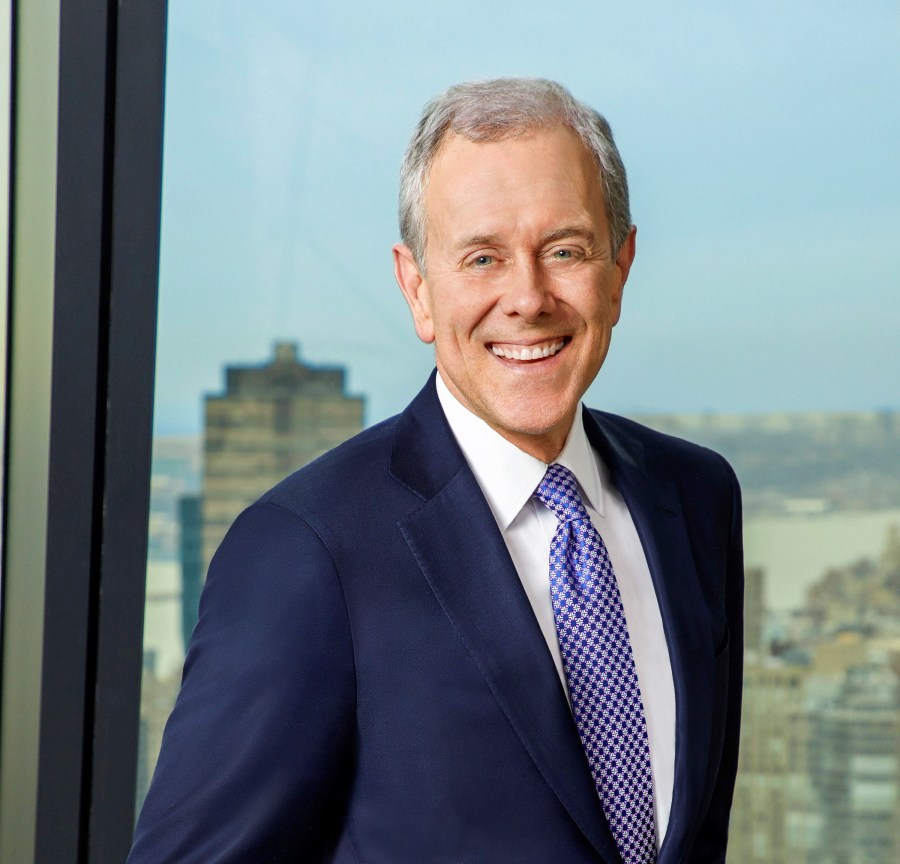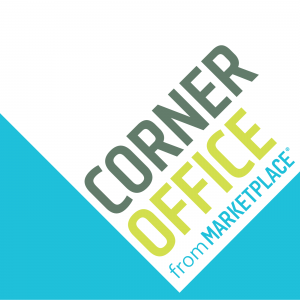Hearst’s Steven Swartz on going digital and diversifying

Founded in 1887 by William Randolph Hearst, the Hearst Corporation started as a single newspaper, the San Francisco Examiner. Now, Hearst is one of the largest media companies in the world, with holdings in dozens of magazines, newspapers, and television networks. Some might be surprised to know that Hearst also has its hand in health care and business information, as well.
Marketplace host Kai Ryssdal recently sat down with Hearst CEO and president Steven Swartz at Hearst Tower in New York City.
The following is an edited transcript of their conversation.
Kai Ryssdal: I don’t know that you probably go to many dinner parties where people don’t know who you are, but if you’re out and about and somebody says, ‘Steve, what do you do? Nice to meet you. How are you?’ What do you say?
Steven Swartz: Well, I usually don’t feel the need to define Hearst as a company, but interestingly enough as the conversation would go on, I think for most people we are thought of as predominantly a newspaper and magazine company, which is fine because we love those businesses. But I think after a while the fact that we’re in a lot of other things comes out and actually tends to take people by surprise.
Ryssdal: So, tick them off for me, the other things this company does. Because, I’ll be honest with you, I was a little surprised.
Swartz: Well, we’re predominantly a television company. We own 20% of ESPN, our fabulous partners at the Walt Disney Company own the rest. We and Disney co-own the A&E networks — largely the A&E Channel, the History Channel, and the Lifetime Channel — that’s a 50/50 partnership with Disney. And then we own 33 local television stations across the country — in Boston, Sacramento, Orlando, Florida —and roughly half of those are ABC. So, that’s also a strong Disney partnership.
Ryssdal: How often do you talk to Bob Iger? This is a sideways question.
Swartz: You know, I find it’s easier to email him. He’s very busy and I must say you get an email back from Bob with lightning speed.
Ryssdal: Television yes, but also newspapers and magazines, right?
Swartz: Yeah. Well, you know the original business, going back to 1887, was the San Francisco Examiner. We ended up owning the Chronicle over time there. So yeah, we have 20 newspapers and literally hundreds of magazines around the world, and some of the great brands — Cosmopolitan, Harper’s Bazaar, Good Housekeeping.

Ryssdal: So, you’re a guy who gets a vote in the media that American and worldwide consumers have at their disposal. How are you thinking about that environment today? When it is fractured, there are various segments of audience that want different things. As you sit at the top of this tower, what’s your approach?
Swartz: Well, I think the business model has certainly become more difficult. It’s better for consumer, I mean, this is an absolutely phenomenal time to be a consumer of media of any kind. I think the business model is harder, and there’s a premium on uniqueness. I think unique content — whether it is television content, or newspaper journalism, or magazine journalism — unique content can still cut through.
Ryssdal: I don’t want to go too far down the newspaper rabbit hole, but the New York Times and the Washington Post are the easy winners. The Houston Chronicle is a sizable newspaper in a sizable city. There is a gap though in local journalism in this country and what’s being covered literally at the town level.
Swartz: Well, I do think a number of newspaper companies, regrettably, back in the day made too many acquisitions [and] got caught in a debt situation. So, there are publications struggling. And the fact is advertisers want more digital solutions and less print. And so, there is a need for newspapers across the spectrum — from really small to medium sized —to advance digitally, and some have done it, and some are a little behind in that.
Ryssdal: Talk to me for a second about running this company. You’re doing well, business-wise and bottom line. You’re making lots of acquisitions. How do you go about now growing and increasing the footprint of the Hearst Corporation?
Swartz: Well, you know, I said before that we’re predominantly a television company today. But increasingly the acquisitions that we’re making are business information or medical information or financial information. And the services we’re providing are increasingly software services.
Ryssdal: Explain that to a layperson, right? Business data information.
Swartz: Well, the biggest business that we own in that field is the Fitch bond rating business that competes around the world with Moody’s and S&P to opine on the safety of bonds that are issued around the world and is a vital part of the capital market’s process. And then we own a software business called Homecare Homebase, which is the leading operating system for the home care and hospice industry. So, from a start in trade publishing back 50 years or so ago, a few of those businesses got into gathering data about their industry — and now we have a thriving set of businesses that will generate this year about 40% of the company’s total profits.
Ryssdal: And also, in that diversification protect you from the ups and downs.
Swartz: Well, we think so because these businesses are growing at largely double-digit rates. There is a tremendous market for really unique data sets or really unique software sets that are helping businesses grow.
Ryssdal: Let me try one last thing and we’ll see how you do. I do this every now and then with CEOs — some of them get it, honestly, and some of them don’t. What is your job in five words or less?
Swartz: To create an environment for talented people to succeed.
Ryssdal: That was like 9, but I’ll give you that.













